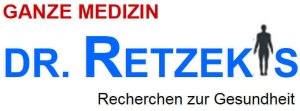Video testimonial from a lovely patient who has been suffering from Parkinson’s since 2017 and is slowly improving her mobility thanks to tDCS brain stimulation.
our experience with brain stimulation is growing
We now have 3 months of experience with brain stimulation according to Petros Kattou and are slowly starting to check where and how we can sustainably get results.
The initial super-euphoria in Parkinson’s has now given way to a more realistic assessment of the possibilities and we see that in severe degenerative brain diseases, in addition to the initial initial effects, we have quite a long time needed to bring about appropriate improvements.
Video testimonial from one of my patients
Result after 2 months of brain stimulation. The patient was almost immobile.
the prompt improvement – unfortunately it doesn’t last
Brain stimulation with tDCS for Parkinson’s brings prompt – but not lasting results.
The results are like taking a pill, within minutes gait and mobility return to normal –> That’s also these extremely euphoric experiences like in this video, where the patient gets up from the wheelchair and can dance –> first video in the linked article
https://ganzemedizin.at/spastic-tetraparese-sozo-brain-center-cypres/
We had the same experiences, which is almost unbelievable for the experienced doctor: you give a little electricity to the brain and the Parkinson’s patient walks almost normally – crazy!
But: unfortunately not lasting
Under the stimulation “WOW – unbelievable”, a few hours later “mow”.
And very frequent brain stimulation (e.g. 3 times a day) leads to a “draining” of the affected brain region so that the situation no longer improves and the disease progresses as usual.
Better slower and longer – more lasting effects
However, stimulation three times a week on several centers in the brain slowly – over many weeks – leads to lasting improvement
In my experience so far, transauricular brainstem stimulation = VAGUS stimulation (Ducest) has only minor effects on Parkinson’s disease.
If it is financially possible (price for appropriate doctors 600-900) it still makes sense, as the vagus stimulator continuously motivates and cleans the entire body –> see my article “Microstimulation” and “pStim”
According to Petros, 30% of patients do not see a response to therapy. I can’t confirm that yet.
also in other brain degenerative processes
This also applies to other degenerative processes: diffuse brain atrophy, cerebellar atrophy of various etiologies, even early Alzheimer’s disease: after 2-3 months of regular stimulation, relatives – or – if they can still do it themselves – those affected report a “subtle “, slight – but noticeable – improvement. Nothing euphoric anymore.
A patient with generalized brain atrophy after an insult, in need of care for 2 years, no longer sleeps all day and increasingly sits in front of the computer to watch things – now 2 x brainstem stimulation and 2 months of tDCS – he was there in Vienna in September and is set by Petros himself. After the first 6 weeks we were rather disappointed, but now we are all relatively confident.
what does the research say
Pubmed review of 29 studies from 2019
Results of this study: 29 studies were included in this systematic review.
15 studies involved single tDCS sessions (patients = 256)
14 studies showed the result of repeated tDCS sessions (patients = 294).
= 29 studies
8 studies of single tDCS and 10 studies of repeated tDCS showed significant results.
= 18 studies show positive results, especially those where stimulation was repeated several times
Studies with multi-target stimulation (= several centers in the brain) showed significant improvements in mobility (p=0.006), balance (by 50.9%) compared to mono-target stimulation, gait speed (by 29%) and fall reduction (p=0.05).
**What is tDCS and how does it work?** (ChatGPT)
Transcranial direct current stimulation (tDCS) is a form of neurostimulation that uses weak electrical currents to modulate neuronal activity in the brain. It is knownnt that this method can relieve the symptoms of various neurological diseases, including Parkinson’s. tDCS aims to improve neuronal plasticity, which can lead to better motor and cognitive function.
for PLUS symptoms of Parkinson’s – CONTINUOUS MOVEMENT
These annoying constant movements can probably be controlled quite well in the future. Petros is quite enthusiastic about it and says that we will get these devices in about 2-3 months.
You can see the effectiveness in this video
TED Talk about tDCS in Parkinson’s
and don’t forget about vitamin B1 for Parkinson’s!!
Daphne Bryan tried out the results of an Italian neurologist who saw sustained improvements in almost all brain degenerative diseases through B1 and wrote a book about it
- Bryan PhD, Daphne (Author)
Interview with Daphne Bryan



